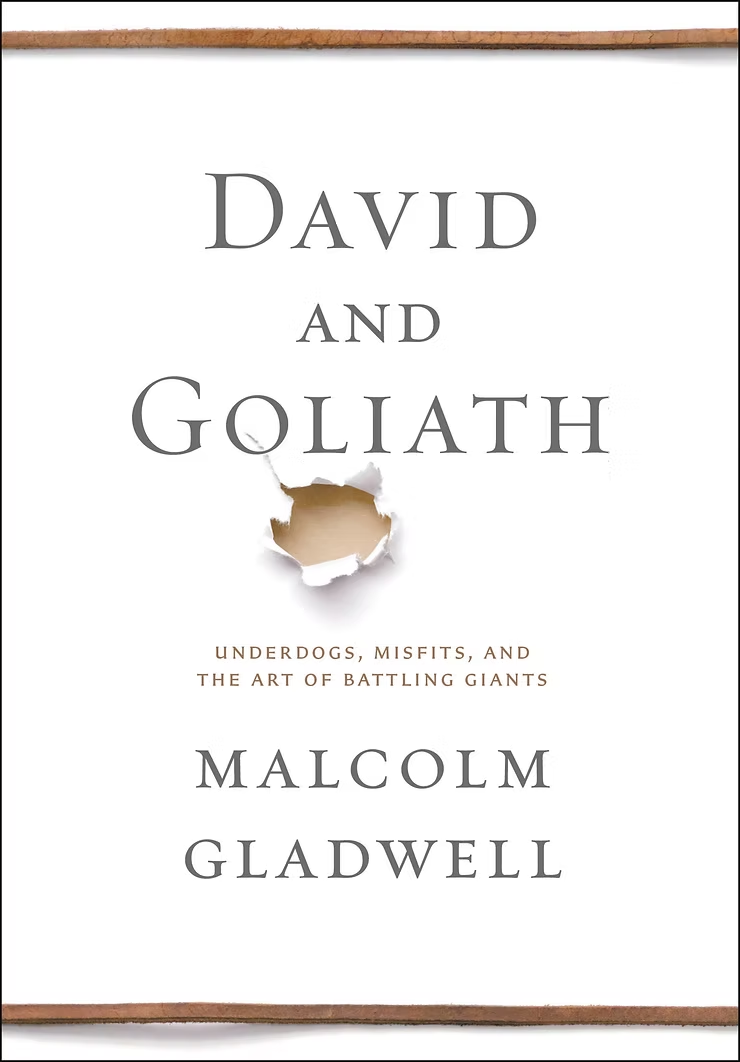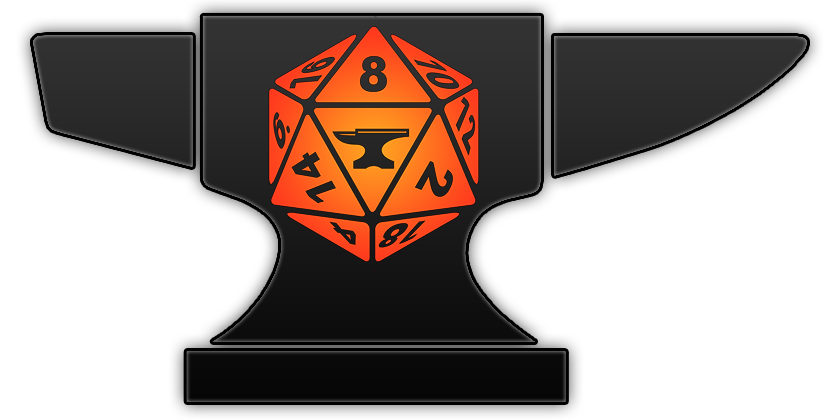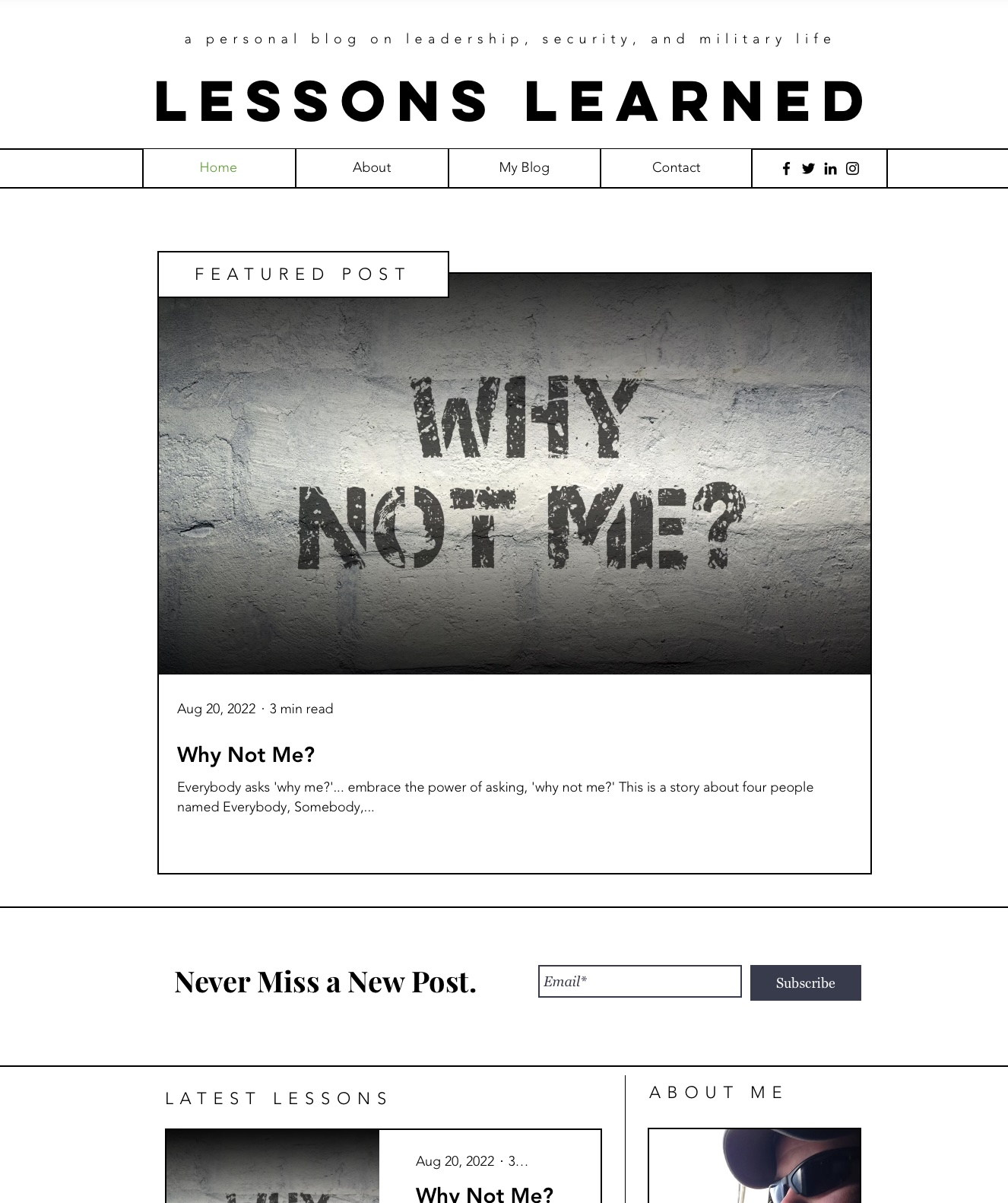Malcolm Gladwell explores the David and Goliath trope, revealing that maybe we’ve been learning the wrong lesson.
Most of us in Western culture have heard the story of David and Goliath since our early childhoods. It has arisen as a common trope to describe an underdog rising up and obliterating their opponent – and all expectations. Malcolm Gladwell challenges our understanding of this classic tale in his appropriately named book, David and Goliath. In this article, I’ll review the essential details of this popular story, summarize Gladwell’s important observations, and consider some modern examples. I will also reflect on how Gladwell’s work might reflect productively in discussions within my professional sphere, the U.S. Air Force.
The Battle in the Valley of Elah
This story arises from the Tanakh (or Hebrew Bible) in 1 Samuel 17, as the Israelites marched against the Philistines. As they camped across from each other, with the Valley of Elah between them, a heavily armored mountain of an infantryman named Goliath emerged from the Philistine camp. Making his way down into the valley, preceded by his shield-bearer, he goaded the Israelites into presenting their champion for single combat. This victor would take the others as the opposing army as their subjects. This was not an uncommon way of settling disputes at the time; it significantly reduced the massive casualties common in such wars of attrition. As the increasingly-terrified Israelites looked upon their imposing foe, he bellowed for one of them to “come down to [him].”
This charade continued for forty days when a passing shepherd named David asked what was going on. Upon hearing that the Israelite King had promised significant wealth to the man who could defeat Goliath, David volunteered to be the Israelites’ champion. Saul, the leader of the Israelite army, looked the skinny young shepherd over and – no doubt fearing for his army – dissented sharply. David relented, explaining that while he was no trained soldier, his lifetime of hunting and killing the bears and lions that threatened his flock prepared him well for such a challenge as Goliath. David refused Saul’s offers to equip him with heavy armor so that he might at least be equipped similar to Goliath, stating simply, “I cannot go in these, for I am not used to them.” He turned away the sword, preferring his simple staff, a sling, and five smooth stones instead.
Goliath scoffed as David emerged from the Israelite ranks to answer his challenge, demanding him to “Am I a dog, that you come at me with sticks? Come here, and I’ll give your flesh to the birds and wild animals!” Without warning, David took off in a dead sprint to close the distance with the Philistine, loading his sling and launching a stone straight into Goliath’s forehead. David stood over the felled giant and finished him with his own sword. The Israelites were victorious.

An Underdog Tale… or is it?
David and Goliath’s battle had all of the apparent makings of a classic underdog tale. A young, untested, and underweight warrior lacking arms and armor takes up the charge against a massive, powerful, and well-equipped foe. We like to assume that this was an incredibly asymmetric fight, and it was David’s positive attitude (and presumably the support of his god) that made it possible. Gladwell challenges this, looking closer at both the historical context and clues of Goliath’s true capability.
First, we need to understand that wars of these times were often fought with armies aligned in one of three primary roles: infantry, cavalry, and slingers. Infantry could fend off cavalry charges effectively with pole-arms and swords, cavalry could close the distance too fast for slingers to get a shot in, and skilled slingers could trivially obliterate infantry. The relationship between these three in battle was often a practical game of Rock, Paper, Scissors. Judging by Goliath’s heavy arms and armor, he was an infantryman. While David was not a soldier by any stretch, practice on the accurate use of a sling would have been critical to defending his humble flock from predators. Slingers, in need of their dexterity and clear sight, wore little armor. David was a slinger. Robert Wadlow with his father
Furthermore, let’s look at the enormous Goliath, said to stand “six cubits and a span.” Given that a cubit is typically understood to be approximately 18 inches, this means that Goliath may have been measured at nine feet tall! While impressive, this is not necessarily the stuff of legends; Robert Wadlow (1918-1940) was the tallest man in recorded history, measuring eight feet and 11 inches. Like many folks growing to such heights, Wadlow suffered from Gigantism, which comes from a benign tumor growing against the pituitary gland and overstimulates the production of growth hormone. Many experts believe that Goliath likely suffered from a form of this called Acromegaly, which includes a range of complications, such as (importantly) poor vision caused by the tumor’s pressure on the optic nerve.
Gladwell points out a couple of clues that lead us to believe that Goliath was weaker than he looked, primarily due to the possibility of his impaired vision. Early in the story, when Goliath first emerges from the Philistine ranks, the story mentions that “his shield-bearer went ahead of him.” Why ahead of him? Because Goliath could not see very far and needed assistance. Later, when David appears to challenge him, Goliath proclaims insult that David comes “at him with sticks.” Why the odd use of the plural? Because Goliath’s vision problems resulted in double-vision at a distance. Why does Goliath continually demand that his challengers come to him to fight? Because if he instead went to them, it would reveal his poor eyesight. These issues may not have been a problem for Goliath when he was withstanding a cavalry charge or meeting a fellow infantryman in close-quarters combat, but against a trained slinger, they were utterly crippling.
Gladwell’s conclusion? The common understanding of the story of David and Goliath is entirely wrong. As a skillful slinger, David had a clear tactical advantage against and overburdened infantryman. David wisely understood Goliath’s tactical limitations, and possibly his physical ones as well, as he launched his stone before he was in the effective range of Goliath’s sight. What becomes clear to us now is that the underdog was actually Goliath! That’s not to say that David did nothing special; his achievement was in convincing the Israelites to defy convention. Conventional wisdom for single combat would pit two infantrymen against each other. Goliath and the Philistines (understandably) expected the Israelites to field their strongest infantryman; nobody gave any thought to the possibility that a foe would do anything different. The story of David and Goliath is not a story of a scrappy underdog; it’s about the power of unconventional warfare and challenging expectations. David changed the rules.
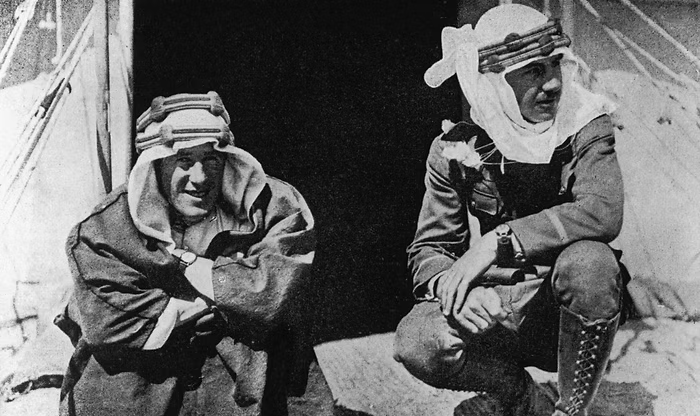
The Modern Era
What made this revelation so compelling to me is that I have seen it demonstrated countless times in modern military history. During the First World War, T.E. Lawrence (famously known as Lawrence of Arabia) recognized the value in asymmetrical warfare when he led the Arab Revolt with Faisal against the Ottoman Empire on the Arabian Peninsula. Eschewing direct confrontation, Lawrence and Faisal’s fast-moving Bedouin fighters harassed the Turk’s supply lines, making them increasingly paranoid and forcing them to pour resources into fortifying defensive enclaves in the major cities. They safely encamped by the Red Sea, where they could rely on the threat of bombardment by British warships to protect them from Turkish retribution. Lawrence noted that while the Turks may have control over Medina and Mecca, the rest of the peninsula effectively belonged to the Arabs. Split between multiple fronts, the Turks lacked the men and materiel necessary to secure and sustain their early conquest.
This situation should sound familiar to anyone watching the conflict in Afghanistan since 2001. The U.S. military has continually found itself harassed, primarily along supply lines. As a result, it has continuously refocused its relatively small troop numbers on defending a small number of well-fortified bases and keeping that supply chain moving. Missions “outside of the wire” are often done only with extensive (and expensive) steps focused on force protection, including armored vehicles, airborne overwatch, and under cover of darkness. All of these face intense scrutiny that can prize force protection as much as victory, depending on the priorities of the commander who must answer for the failures for either. Attempts to bring the fight directly to the Taliban and Haqqani end just short of the sanctuary afforded to them by the Pakistani border and the U.S.’s dogged adherence to international law. While the U.S. quickly gained overall control of Afghanistan after the 2001 invasion, its limited strength has always been focused on the capital in Kabul and maintaining bases brimming with amazing technology. While fantastic work is done every day to neutralize Taliban and Haqqani fighters in Afghanistan, their influence quickly returns and remains long after the U.S. military completes their day’s mission and falls back into one of their fortified enclaves.
The parallels between these two couldn’t be a more explicit demonstration of Gladwell’s message: sometimes, an abundance of advantages can become disadvantages because they create conventions. Both the Ottoman Turks during World War I and the U.S. military in Afghanistan since 2001 have held distinct Goliath-like advantages by any measure, yet in both instances, their foes’ indifference to convention has wholly undermined their efforts. Like Goliath, they both have also had less obvious weaknesses that make the results seem inevitable in hindsight. The message is clear: victory in warfare is not automatically handed to the side with the most advantages, it’s gained by the one that can abandon convention and rapidly innovate.
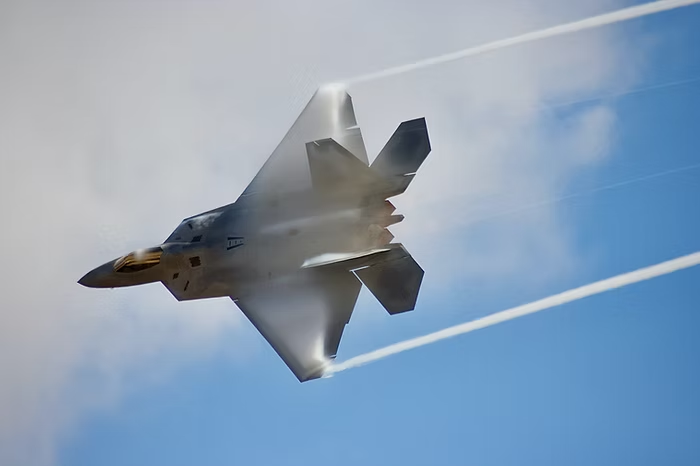
Kill Your Darlings
The advice, “kill your darlings,” is often given to young writers who must be convinced to edit out their favorite characters or plot lines – no matter how hard they worked to create them or how much they love them – for the sake of making a better overall story. The advice applies far more widely to any individual or organization that does not wish to become a Goliath. A willingness to abandon the convention you have established and benefited from is vital to maintaining your competitiveness in any sphere. The modern Air Force – an organization founded and led by pilots – is grappling with a world that drives them toward remote and automated operation of the very machines they see as their core identity. This is the service that prides itself on its ability to project air power and dominate the skies with its revolutionary fighter technology and the pilots trained extensively to employ them… while conveniently ignoring that the last dogfight involving one of these Goliaths was in 1999 over Kosovo. Convention would have China or Russia meeting the U.S. on the field in direct conflict, with Goliath-esque spears clashing against heavy shields and armor. The new reality is that the Davids on all sides have killed their darlings, eschewing investment of time and resources in conventional tools, and are spending their time sharpening tools in cyberspace, space, and along the full spectrum of conflict short of war. The question remains: can the U.S. Air Force – or the overall Department of Defense – dare to shed its conventional advantages, or will it remain a Goliath, calling for another side to present its champion?
Conclusion
Malcolm Gladwell, as always, is compelling to read. He weaves a range of stories together that independently support his primary thesis, even if they can seem carefully selected to a fault. The benefit I find to reading him and authors like him is not the direct lessons or stories, but in how they stimulate your own thoughts based on their thesis. Gladwell consistently encourages his readers to think big and outside of the box, and to that end, David and Goliath succeeds. Let me know what you think of his take on the David and Goliath story! What examples have you observed, or how can you apply these lessons in your life?
